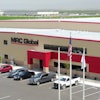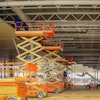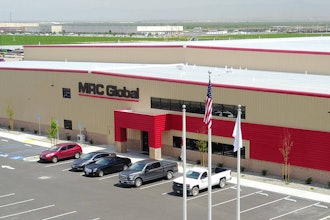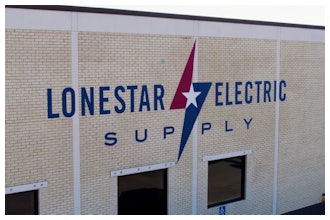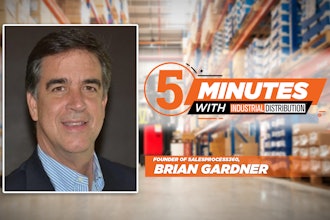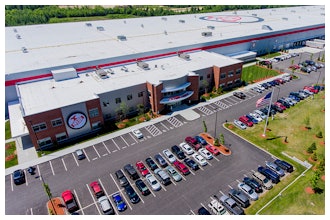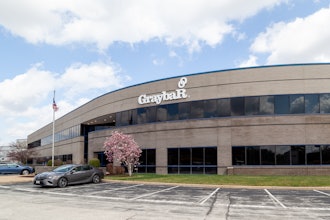WASHINGTON (AP) — The number of people requesting unemployment benefits declined for the second straight week, suggesting that the slowing economy isn't prompting widespread job cuts.
New claims for unemployment aid fell last week by 6,000 to a seasonally adjusted 472,000, the Labor Department said Thursday. Economists had expected a slight increase, according to a survey by Thomson Reuters.
The four-week average of claims, a less-volatile measure, fell by 2,500 to 485,500, its first decrease after four straight increases.
Even with the declines, claims are still at much higher levels than they would be in a healthy economy. When economic output is growing rapidly and employers are hiring, claims generally drop below 400,000.
Still, some economists saw the report as mildly encouraging.
It appears "that a wave of panicked layoffs has passed, as companies have become a bit calmer in the face of the financial and economic disruptions of late spring and early summer," Pierre Ellis, an economist at Decision Economics, wrote in a note to clients.
In a separate report, the Labor Department said productivity fell in the spring by the largest amount in nearly four years while labor cost rose. That indicates companies may have reached the limits of their ability to squeeze more work out of their reduced work forces.
Productivity, or the amount of output per hour of work, dropped at a 1.8 percent annual rate in the April-to-June quarter, double the 0.9 percent decline initially reported a month ago.
Also, the nation's retailers reported surprisingly solid gains for August. Aggressive discounting helped during an unusually hot summer when consumers worried about jobs and a weakening economy.
Requests for jobless benefits haven't improved much this year. New claims stood at 470,000 during the week of Jan. 9, almost the same as last week's figure. The four-week average was about 20,000 lower in January.
Economists closely watch initial claims for real-time information on the job market. They are considered a gauge of the pace of layoffs and a measure of companies' willingness to hire.
Hiring has slowed to a crawl in recent months. The claims report comes one day before the Labor Department is scheduled to issue the August employment report. That is expected to show that private businesses added a net total of only 41,000 jobs last month, the fourth straight month of anemic hiring.
When government jobs are included, total payrolls are forecast to drop by 100,000 — based on about 115,000 temporary census jobs ending. The jobless rate is projected to rise to 9.6 percent from 9.5 percent, according to Thomson Reuters.
The number of people continuing to claim benefits fell by 23,000 to 4.46 million, the lowest since late June.
But that doesn't include millions of people who are receiving extended benefits under emergency programs enacted by Congress during the recession. More than 5.4 million people were on the extended benefit rolls during the week of Aug. 14, the latest data available. That's a drop of about 320,000 from the previous week.
Without more jobs, consumers will likely spend cautiously, making it harder for the economy to gain steam. Consumer spending accounts for about 70 percent of economic activity.
The pace of economic growth has slowed considerably from earlier this year, as the impact of the government's stimulus package fades. Many economists are increasingly pessimistic that private companies will do enough hiring and spending to replace the impact of the stimulus.
The nation's gross domestic product, the broadest measure of economic output, grew at a 3.7 percent annual pace in the first quarter, but that slowed dramatically to 1.6 percent in the April-to-June period. That's not fast enough growth to bring down unemployment.
Economists at Bank of America-Merrill Lynch on Wednesday marked down their estimates of future economic growth. They now expect the economy to grow at only a 1.8 percent pace next year, down sharply from an earlier estimate of 2.3 percent. They project growth will be only 2.5 percent this year, down from 2.6 percent.
That's equivalent to a "growth recession," says Bank of America's top North American economist, Ethan Harris. A growth recession occurs when the economy grows slightly but not enough to reduce the unemployment rate.
Harris now expects the jobless rate to tick back up above 10 percent by early next year.
Comair, a regional airline owned by Delta Air Lines Inc., said Wednesday that it will reduce its fleet by half and cut jobs over the next two years to lower costs. The company, which employs about 2,600 people, didn't say how many jobs would be affected.
Heavy equipment maker Caterpillar Inc., meanwhile, is headed in the other direction. It opened a new road grader factory Wednesday in North Little Rock, Ark. That will create 600 jobs.
___
AP Economics Writer Martin Crutsinger contributed to this report.

